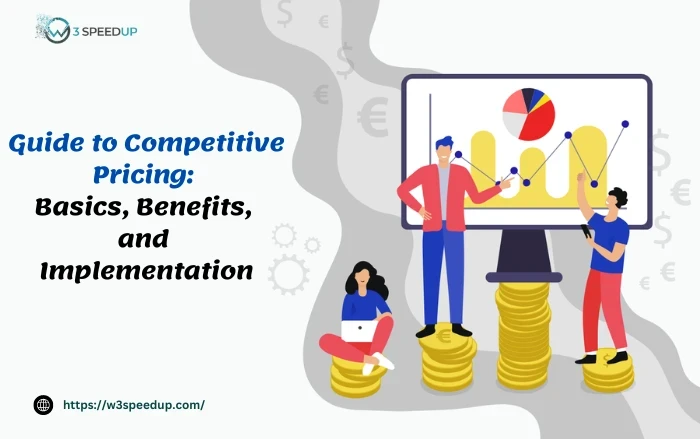Competitive pricing analysis involves researching customers’ reactions to pricing changes, utilizing historical data or surveys. This initial analysis is then reviewed by a pricing analyst team, integrating findings with other key pricing factors to establish an optimal price for a product or service. Competitive pricing strategy, distinct from cost-plus pricing, actively uses competitors’ prices as a primary benchmark for setting one’s own product or service prices. This approach is often termed competition-based or competitor-based pricing.
Difference Between Pricing Analysis and Competitive Pricing Analysis
It’s crucial to distinguish between these two terms. Competitive pricing analysis specifically targets competitors’ pricing strategies, tactics, and actual prices. Its goal is to analyze competitor data with the help of competitive pricing analysis software to strategically set your own product pricing to stay competitive in the market. Conversely, “pricing analysis” is broader, considering various factors beyond competitors’ prices, such as consumer behavior, brand positioning, product costs, and profit goals. Thus, competitive pricing analysis is a key subset within the larger pricing analysis framework.
Understanding Competitive Pricing Dynamics
Businesses face three main options in competitive pricing strategy when launching a new product or service:
- Setting prices below the competitor or industry average.
- Matching the industry average pricing.
- Pricing above the industry average.
Pricing above competitors requires justifying the premium through additional features or benefits, thereby competing on quality and value. Loss leaders or penetration pricing strategy means setting prices lower than the market price and attracting customers to other products and services so that low-profit or even loss-making initial product is offset.
Importance of Competitive Pricing Strategy
According to Statista, more than 82% of buyers compare prices before buying. Thus, businesses that can properly analyze market data and correctly align their offer prices with competitors will get these price-sensitive consumers. An effective competitive pricing strategy allows businesses to acquire new customers, gain more market share, and cost-price their products based on data trends of competing companies. This can increase demand volumes, improve supplier relations, and boost a company’s revenues if not profits.
Key Benefits of Competitive Pricing Analysis
- Increased Profitability: By understanding the competitive landscape, businesses can adjust prices to maintain market share while supporting profitability.
- Market Understanding: Regular competitive pricing analysis provides insights into market dynamics and key competitors’ pricing and promotional strategies.
- Improved Product Positioning: Data from competitive pricing analysis aids in determining the best pricing strategies and price points based on competitor offerings.
- Importance of Competitive Pricing Strategy: Competitive pricing analysis can vary significantly across industries, especially for sectors with complex service models like cybersecurity. For example, organizations evaluating Managed Security Services often rely on tools that streamline price comparison and help justify their investment to stakeholders. If you’re assessing outsourced security solutions, this SOC as a service pricing calculator can help benchmark offerings quickly and transparently against industry competitors.
- Enhanced Customer Acquisition and Retention: Setting competitive prices can attract new customers and retain existing ones, influencing brand loyalty and selection.
Comprehensive Competitive Pricing Analysis Implementation
 1. Assessing Data Quality and Completeness
1. Assessing Data Quality and Completeness
Access to complete, high-quality competitive pricing data is critical. This includes detailed product attribute comparisons, minimal data errors, a high ratio of delivered vs. planned data, frequent updates, and fast data delivery.
 2. Defining Key Parameters for Analysis
2. Defining Key Parameters for Analysis
Essential data points for ongoing analysis should include the price index, competitors’ promotional activities, product availability, and sales volumes. This involves both external competitor data and internal sales data analysis.
 3. Categorizing and Segmenting Competitors
3. Categorizing and Segmenting Competitors
Competitors should be categorized into primary, secondary, and tertiary groups based on product quality, brand positioning, and target demographics. This categorization focuses analysis on relevant competitors and is vital for enterprises with large, complex product catalogs.
 4. Utilizing Advanced Analytics in Pricing Analysis
4. Utilizing Advanced Analytics in Pricing Analysis
Sophisticated analytics and machine learning tools can streamline the data collection, monitoring, and analysis process. These tools offer objective analysis, process large data quantities, identify patterns, and provide optimized pricing recommendations.
 5. Monitoring Competitors’ Online Activities
5. Monitoring Competitors’ Online Activities
A comprehensive view of the competitive landscape includes monitoring competitors’ online presence, such as websites, social media, digital ads, and customer interactions. This provides insights into competitors’ branding, marketing focus, and customer engagement.
In summary
Formulating a competitive pricing strategy from the ground up is a difficult task. It is important to carefully consider a number of data-related factors, including parameters and quality. Businesses need to determine whether and how much automation they will use in their pricing process. In order to truly succeed in the market, they must also carefully research their rivals to gain a deeper comprehension of their position within it.
 Read More: Importance of WordPress Caching in Speed and Performance Optimization
Read More: Importance of WordPress Caching in Speed and Performance Optimization
 Read More: A Comprehensive Guide: How to Check Website Speed on Google
Read More: A Comprehensive Guide: How to Check Website Speed on Google
 Christmas Mega Sale – Enjoy Up to 50% OFF on Every Plan!
Christmas Mega Sale – Enjoy Up to 50% OFF on Every Plan! 


